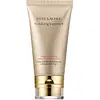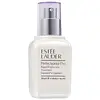What's inside
What's inside
 Key Ingredients
Key Ingredients

 Benefits
Benefits

 Concerns
Concerns

 Ingredients Side-by-side
Ingredients Side-by-side

Tridecyl Stearate
EmollientTridecyl Trimellitate
EmollientDipentaerythrityl Hexacaprylate/Hexacaprate
EmulsifyingButylene Glycol
HumectantGlyceryl Stearate
EmollientCocos Nucifera Oil
MaskingSilica
AbrasiveCaprylic/Capric Triglyceride
MaskingAcetyl Glucosamine
Skin ConditioningCetearyl Alcohol
EmollientCeteareth-20
CleansingHexyldecyl Stearate
EmollientMoringa Oleifera Seed Extract
Skin ConditioningTuna Extract
Skin ConditioningLaminaria Digitata Extract
Skin ProtectingWhey Protein
Skin ConditioningAlgae Extract
EmollientDisodium Cocoamphodipropionate
CleansingCaprylyl Glycol
EmollientSorbitol
HumectantArtemia Extract
Skin ConditioningAcetyl Hexapeptide-8
HumectantBisabolol
MaskingCaffeine
Skin ConditioningGlycerin
HumectantSodium Hyaluronate
HumectantStearyl Alcohol
EmollientOleth-10 Phosphate
Parfum
MaskingCarbomer
Emulsion Stabilising1,2-Hexanediol
Skin ConditioningIsoceteth-20
EmulsifyingTriethanolamine
BufferingPotassium Sorbate
PreservativeDisodium EDTA
Chlorphenesin
AntimicrobialPhenoxyethanol
PreservativeCI 19140
Cosmetic ColorantCI 14700
Cosmetic ColorantTridecyl Stearate, Tridecyl Trimellitate, Dipentaerythrityl Hexacaprylate/Hexacaprate, Butylene Glycol, Glyceryl Stearate, Cocos Nucifera Oil, Silica, Caprylic/Capric Triglyceride, Acetyl Glucosamine, Cetearyl Alcohol, Ceteareth-20, Hexyldecyl Stearate, Moringa Oleifera Seed Extract, Tuna Extract, Laminaria Digitata Extract, Whey Protein, Algae Extract, Disodium Cocoamphodipropionate, Caprylyl Glycol, Sorbitol, Artemia Extract, Acetyl Hexapeptide-8, Bisabolol, Caffeine, Glycerin, Sodium Hyaluronate, Stearyl Alcohol, Oleth-10 Phosphate, Parfum, Carbomer, 1,2-Hexanediol, Isoceteth-20, Triethanolamine, Potassium Sorbate, Disodium EDTA, Chlorphenesin, Phenoxyethanol, CI 19140, CI 14700
Water
Skin ConditioningButylene Glycol
HumectantGlycerin
HumectantGlycereth-26
HumectantIsononyl Isononanoate
EmollientDimethicone
EmollientPropanediol
SolventAscorbyl Glucoside
AntioxidantAlgae Extract
EmollientSucrose
HumectantAcetyl Glucosamine
Skin ConditioningHydroxyethyl Urea
HumectantLens Esculenta Fruit Extract
Skin ConditioningCitrullus Lanatus Fruit Extract
Skin ConditioningPyrus Malus Fruit Extract
Skin ConditioningSaccharum Officinarum Extract
MoisturisingMyrtus Communis Leaf Extract
PerfumingAvena Sativa Kernel Extract
AbrasiveTriticum Vulgare Germ Extract
Skin ConditioningHordeum Vulgare Extract
EmollientCladosiphon Okamuranus Extract
Skin ConditioningSalicylic Acid
MaskingHydrolyzed Prunus Domestica
Skin ConditioningCaffeine
Skin ConditioningSodium Lactate
BufferingDipotassium Glycyrrhizate
HumectantSqualane
EmollientOryzanol
Skin ConditioningResveratrol
AntioxidantSodium Hyaluronate
HumectantSodium PCA
HumectantEthylhexylglycerin
Skin ConditioningBis-PEG-18 Methyl Ether Dimethyl Silane
EmollientTocopheryl Acetate
AntioxidantPEG-75
HumectantOleth-3 Phosphate
Sorbitol
HumectantCaprylyl Glycol
EmollientOleth-3
EmulsifyingSodium Polyaspartate
HumectantOleth-5
EmulsifyingAcrylates/C10-30 Alkyl Acrylate Crosspolymer
Emulsion StabilisingPropylene Glycol Caprylate
Skin ConditioningDextrin
AbsorbentYeast Extract
Skin ConditioningCholeth-24
EmulsifyingCarbomer
Emulsion StabilisingSodium Hydroxide
BufferingCeteth-24
CleansingXanthan Gum
EmulsifyingParfum
MaskingGlyceryl Acrylate/Acrylic Acid Copolymer
HumectantCitric Acid
BufferingSodium Citrate
BufferingDisodium EDTA
BHT
AntioxidantPotassium Sorbate
PreservativeSodium Benzoate
MaskingPhenoxyethanol
PreservativeWater, Butylene Glycol, Glycerin, Glycereth-26, Isononyl Isononanoate, Dimethicone, Propanediol, Ascorbyl Glucoside, Algae Extract, Sucrose, Acetyl Glucosamine, Hydroxyethyl Urea, Lens Esculenta Fruit Extract, Citrullus Lanatus Fruit Extract, Pyrus Malus Fruit Extract, Saccharum Officinarum Extract, Myrtus Communis Leaf Extract, Avena Sativa Kernel Extract, Triticum Vulgare Germ Extract, Hordeum Vulgare Extract, Cladosiphon Okamuranus Extract, Salicylic Acid, Hydrolyzed Prunus Domestica, Caffeine, Sodium Lactate, Dipotassium Glycyrrhizate, Squalane, Oryzanol, Resveratrol, Sodium Hyaluronate, Sodium PCA, Ethylhexylglycerin, Bis-PEG-18 Methyl Ether Dimethyl Silane, Tocopheryl Acetate, PEG-75, Oleth-3 Phosphate, Sorbitol, Caprylyl Glycol, Oleth-3, Sodium Polyaspartate, Oleth-5, Acrylates/C10-30 Alkyl Acrylate Crosspolymer, Propylene Glycol Caprylate, Dextrin, Yeast Extract, Choleth-24, Carbomer, Sodium Hydroxide, Ceteth-24, Xanthan Gum, Parfum, Glyceryl Acrylate/Acrylic Acid Copolymer, Citric Acid, Sodium Citrate, Disodium EDTA, BHT, Potassium Sorbate, Sodium Benzoate, Phenoxyethanol
Ingredients Explained
These ingredients are found in both products.
Ingredients higher up in an ingredient list are typically present in a larger amount.
Acetyl Glucosamine is an antioxidant and humectant. It is an amino acid sugar and is naturally found in our skin.
The cool thing about this ingredient? It helps the skin produce hyaluronic acid and boost hydration. It also has antioxidant benefits to protect skin cells.
When paired with niacinamide, Acetyl Glucosamine has been shown to be effective at reducing discoloration.
Learn more about Acetyl GlucosamineAlgae Extract is a confusing name. This is because algae is an informal term for a group of 30,000 aquatic organisms that can photosynthesize.
The term 'algae extract' can refer to any one, or a blend of, the 30,000 types.
Algae is rich in antioxidants. Antioxidants help fight free-radicals. Free-radicals are molecules that may damage your skin cells, such as pollution.
Algae can also help with soothing and hydrating skin.
Many different types of algae have different benefits.
Learn more about Algae ExtractButylene Glycol (or BG) is used within cosmetic products for a few different reasons:
Overall, Butylene Glycol is a safe and well-rounded ingredient that works well with other ingredients.
Though this ingredient works well with most skin types, some people with sensitive skin may experience a reaction such as allergic rashes, closed comedones, or itchiness.
Learn more about Butylene GlycolCaffeine is most associated with coffee, tea, and cacao. In skincare, it helps with calming inflammation and is rich in antioxidants.
While caffeine is used to treat cellulite and and dark circles, further studies are needed to prove this. It has been believed to help with these skin conditions due to its ability to dilate blood vessels and increase blood flow.
Some studies are looking into caffeine's ability to protect against UV rays.
Learn more about CaffeineCaprylyl Glycol is a humectant and emollient, meaning it attracts and preserves moisture.
It is a common ingredient in many products, especially those designed to hydrate skin. The primary benefits are retaining moisture, skin softening, and promoting a healthy skin barrier.
Though Caprylyl Glycol is an alcohol derived from fatty acids, it is not the kind that can dry out skin.
This ingredient is also used as a preservative to extend the life of products. It has slight antimicrobial properties.
Learn more about Caprylyl GlycolCarbomer is a polymer of acrylic acid. Its main role is to create a gel consistency.
A high amount of carbomer can cause pilling or balling up of products. Don't worry, most products contain 1% or less of carbomer.
Disodium EDTA plays a role in making products more stable by aiding other preservatives.
It is a chelating agent, meaning it neutralizes metal ions that may be found in a product.
Disodium EDTA is a salt of edetic acid and is found to be safe in cosmetic ingredients.
Learn more about Disodium EDTAGlycerin is already naturally found in your skin. It helps moisturize and protect your skin.
A study from 2016 found glycerin to be more effective as a humectant than AHAs and hyaluronic acid.
As a humectant, it helps the skin stay hydrated by pulling moisture to your skin. The low molecular weight of glycerin allows it to pull moisture into the deeper layers of your skin.
Hydrated skin improves your skin barrier; Your skin barrier helps protect against irritants and bacteria.
Glycerin has also been found to have antimicrobial and antiviral properties. Due to these properties, glycerin is often used in wound and burn treatments.
In cosmetics, glycerin is usually derived from plants such as soybean or palm. However, it can also be sourced from animals, such as tallow or animal fat.
This ingredient is organic, colorless, odorless, and non-toxic.
Glycerin is the name for this ingredient in American English. British English uses Glycerol/Glycerine.
Learn more about GlycerinParfum is a catch-all term for an ingredient or more that is used to give a scent to products.
Also called "fragrance", this ingredient can be a blend of hundreds of chemicals or plant oils. This means every product with "fragrance" or "parfum" in the ingredients list is a different mixture.
For instance, Habanolide is a proprietary trade name for a specific aroma chemical. When used as a fragrance ingredient in cosmetics, most aroma chemicals fall under the broad labeling category of “FRAGRANCE” or “PARFUM” according to EU and US regulations.
The term 'parfum' or 'fragrance' is not regulated in many countries. In many cases, it is up to the brand to define this term.
For instance, many brands choose to label themselves as "fragrance-free" because they are not using synthetic fragrances. However, their products may still contain ingredients such as essential oils that are considered a fragrance by INCI standards.
One example is Calendula flower extract. Calendula is an essential oil that still imparts a scent or 'fragrance'.
Depending on the blend, the ingredients in the mixture can cause allergies and sensitivities on the skin. Some ingredients that are known EU allergens include linalool and citronellol.
Parfum can also be used to mask or cover an unpleasant scent.
The bottom line is: not all fragrances/parfum/ingredients are created equally. If you are worried about fragrances, we recommend taking a closer look at an ingredient. And of course, we always recommend speaking with a professional.
Learn more about ParfumPhenoxyethanol is a preservative that has germicide, antimicrobial, and aromatic properties. Studies show that phenoxyethanol can prevent microbial growth. By itself, it has a scent that is similar to that of a rose.
It's often used in formulations along with Caprylyl Glycol to preserve the shelf life of products.
Potassium Sorbate is a preservative used to prevent yeast and mold in products. It is commonly found in both cosmetic and food products.
This ingredient comes from potassium salt derived from sorbic acid. Sorbic acid is a natural antibiotic and effective against fungus.
Both potassium sorbate and sorbic acid can be found in baked goods, cheeses, dried meats, dried fruit, ice cream, pickles, wine, yogurt, and more.
You'll often find this ingredient used with other preservatives.
Learn more about Potassium SorbateSodium Hyaluronate is hyaluronic acid's salt form. It is commonly derived from the sodium salt of hyaluronic acid.
Like hyaluronic acid, it is great at holding water and acts as a humectant. This makes it a great skin hydrating ingredient.
Sodium Hyaluronate is naturally occurring in our bodies and is mostly found in eye fluid and joints.
These are some other common types of Hyaluronic Acid:
Learn more about Sodium HyaluronateSorbitol is a sugar alcohol. It is a hydrating and moisturizing agent created from the reduction process of glucose.
Most sorbitol is usually made from potato starch. It is also found in fruits such as apples and pears.
As a humectant, Sorbitol helps draw water to the skin. This helps keep the skin hydrated. Sorbitol also helps create a thicker texture in products. You might find sorbitol in your toothpaste and other gels.
It is a non-irritating ingredient that is great for those with dry skin.
Sorbitol is a prebiotic. It helps promote the growth of healthy bacteria on your skin. The bacteria on your skin form a microbiome. This microbiome helps protect your skin from infection and harmful bacteria.
Learn more about Sorbitol